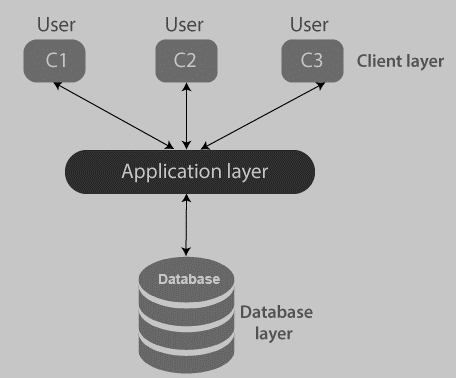
 Data Structure
Data Structure Networking
Networking RDBMS
RDBMS Operating System
Operating System Java
Java MS Excel
MS Excel iOS
iOS HTML
HTML CSS
CSS Android
Android Python
Python C Programming
C Programming C++
C++ C#
C# MongoDB
MongoDB MySQL
MySQL Javascript
Javascript PHP
PHP
- Selected Reading
- UPSC IAS Exams Notes
- Developer's Best Practices
- Questions and Answers
- Effective Resume Writing
- HR Interview Questions
- Computer Glossary
- Who is Who
What is tier-3 architecture in DBMS?
The overall design of the Database Management System (DBMS) depends on its architecture. A large amount of data on web servers, Personal Computers (PC) and other elements are linked with networks with the help of basic client or server architecture.
PCs and workstations are part of Client architecture that are connected over the network. The architecture of DBMS depends on how the users are linked to the database.
There are three kinds of DBMS Architecture, which are as follows ?
Tier-1 Architecture.
Tier-2 Architecture.
Tier-3 Architecture.
Tier-3 Architecture
The 3-tier architecture contains one more layer between the client and the server.
In this architecture, there is no direct communication between client and server.
Mainly, the 3-tier is used for large applications on the web.
The features of 3-tier architecture are data backup, recovery, security, and concurrency control.
Layers
The 3-tier architecture consists of the three layers as follows ?
Presentation layer ? This layer is also called the client layer. The front-end layer consists of a user interface. The main purpose is to communicate with the application layer.
Application layer ? This layer is also called the business logic layer. It acts as a middle layer between the client and the database server which are used to exchange partially processed data.
Database layer ? In this layer the data or information is stored. This layer performs operations like insert, update and delete to connect with the database.
The Tier-3 Architecture is diagrammatically represented below ?


